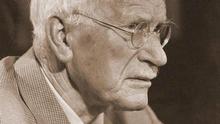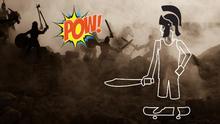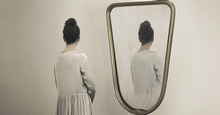The Impact of Low Scoring Archetypes on College Student Success
Mona AlQadi, PhD reports on her dissertation research using the Pearson-Marr Archetype Indicator® (PMAI®) to gain a deeper understanding of the unconscious archetypal narratives at play in underperformance in college students. Her study yields several insights into the relationship between low-scoring archetypes and students’ attitudes, behaviors, and worries toward their academic goals.
Attending college is like embarking on a journey of self-discovery and transformation. Education, as a heroic journey, transforms a student in such a way that it invites them to re-examine their worldview, as well as internalized cultural norms. As heroes make their way through this journey, they are drawing upon different psychological archetypes embodied in their life. In higher education, a functional approach to student success has neglected personal development, initiating a calling for a transformative educational approach to help students transcend personal boundaries and limitations.
The purpose of the study, discussed in this article, was to discover the dominant Shadow archetypes of first-year college students and explore the influence of archetypal unconscious traits represented in Shadow, or low-scoring archetypes, on students’ self-efficacy or academic success.
Applying Carol Pearson’s 12-archetype framework through the Pearson-Marr archetype system and assessment, we see that student growth is supported by universal archetypes or patterns, which, as much as they can help, can also hinder if there is no awareness of each archetype’s negative qualities. These negative qualities represent the Shadow, or unconscious traits, of each archetype. Living out negative qualities makes the college experience more difficult and unpleasant, preventing the student from reaching their full potential. Therefore, to reap the benefits of the positive qualities of each archetype, the student needs to identify the negative qualities of their archetype profile. Only then will they be able to activate their inner potential and enjoy receiving the gifts of each archetype.
Self-efficacy is one of the psychological perspectives that contributes to understanding students’ success in college; it is a key element of social cognitive theory. Self-efficacy helps a student persevere when faced with academic and social challenges.1 Those students with a strong, better developed self-efficacy are more confident about their ability to succeed, while those with low self-efficacy are more likely to give up when faced with difficult circumstances. Sherer’s General Self-Efficacy Scale (SGSES) assessment was used in the study to measure student academic success. This study aimed to examine the role of unconscious traits within the psyche of college students and its impact on their academic success through a correlational analysis of the two instruments and a thematic analysis of semi-structured interviews.
The study sample consisted of 115 students who completed the PMAI instrument, 140 students who completed the SGSES, and 76 students who completed both assessments. Sample means of the PMAI instrument placed the Idealist, Ruler, and Warrior archetypes in the lowest scoring category. Low-scoring archetypes indicate students’ Blind Spots. Blind Spots represent the “archetypes that currently have the least amount of energy in the psyche”.2 Hence, low scores indicate that the traits and talents of these archetypes are not within students’ conscious identity; they are not expressing or accessing the positive qualities of these archetypes. Accordingly, negative traits are more likely to be present instead. Moreover, low-scoring archetypes indicate the presence of Shadow aspects or the unconscious traits of these archetypes in students’ lives. The Shadow expression of an archetype refers to an undeveloped archetype and an unskilled attempt to express its positive side.
A statistical analysis was carried out correlating low scoring archetypes on the PMAI instrument with self-efficacy measured by the SGSES. The analysis indicated a linear relationship between the Shadow archetypes, oriented as the lowest scoring archetypes of Idealist, Warrior, and Ruler for the sample produced from the assessment, and students’ self-efficacy. That is, when Idealist, Warrior, and/or Ruler were low, self-efficacy was also low.
Students’ perceptions on the influence of their low-scoring archetypes were investigated through semi-structured interviews and a thematic analysis was used to analyze the interview transcripts. The thematic analysis revealed that first year college students’ academic success is influenced by the traits of their Shadow archetypes in various ways.
The low-scoring Idealist among college students revealed a tendency for the following traits: pessimism, lack of trust, and lack of a sense of safety. Each of these traits have a different impact on students’ success. For instance, students reported that pessimism leads them to avoid work, which leads to procrastination, increases their stress levels, affects their motivation, and impacts their exam performance. As for lack of trust, students reported that it has an impact on their social self-efficacy, increasing their sense of loneliness which caused them not to seek help. Lacking a sense of safety impacts absenteeism, students reported.
The low-scoring Warrior among college students demonstrated a struggle with the ability to set goals, a lack of self-discipline, and difficulty setting clear boundaries. Students reported inability to set goals has caused them to avoid setting goals and avoid any challenging goals. Lack of discipline has caused students to suffer higher stress levels. Additionally, the inability to set clear boundaries impacted students’ self-confidence and caused them to be pushed over by others. Students who have low scores on Warrior reported their unwillingness to participate in competitive situations.
The low score for Ruler showed up in the students’ experience as a tendency to suffer from indecisiveness, an inability to create structure and systems, and trouble taking responsibility for their work. While students reported that indecisiveness affects their productivity and their motivation to succeed, the inability to create structure has increased their levels of stress and left them with a sense of inability to have control over their lives. Lastly, not taking responsibility leads students to procrastinate and not to finish their academic tasks on time, which caused them to fall behind.
Pearson and Marr explained that the combination of low scores for Idealist, Ruler, and Warrior may indicate feelings of depression especially if combined with a low score for Jester.3 Examining the PMAI data collected in the study, it was found that students who scored low on Idealist, Ruler and Warrior also tended to score low on Jester. Therefore, the combinations of pessimism, not having the ability to take charge and set goals, along with a lack of pleasure, may play a part in keeping students from success or reaching their potential. The findings suggest that low scores for Idealist, Ruler and Warrior are linked qualitatively as well as quantitatively with a low sense of self-efficacy.
Higher educational institutions put effort into helping their students develop the required knowledge, skills, and competencies for academic success. Although competent behavior largely depends on acquiring knowledge and skills, it is obvious that students’ self-efficacy plays a predicting and mediating role in relation to their achievements, motivation, and learning. Therefore, it seems crucial that institutions of higher education pay attention to students’ developing self-efficacy as it is related to unconscious Shadow traits. Knowing the influences that affect the development of students’ success can help higher educational institutions to develop and plan educational programs that enhance students’ self-efficacy. Shadow traits shape our experiences, knowledge, and perceptions, and can cause us to avoid the reflection necessary to obtain self-knowledge. Therefore, developing self-knowledge of unconscious Shadow traits can help students to understand their strengths and weaknesses which in turn leads them toward individuation or self-realization.
The findings of this study yielded a qualitative and quantitative relation between the Shadow archetypes and students’ self-efficacy. Furthermore, this study revealed the unconscious barriers which lie with the low scoring archetypes and the impact they have on students’ academic journey. Awareness of the barriers that reside in the unconscious mind can contribute to a greater understanding of students’ mental and emotional impediments that are preventing them from reaching their full potential. For this to happen, we need a transformative approach to education that will help raise students’ self-awareness about their personal and collective unconscious beliefs.
1. Bandura, Albert. Self-Efficacy the Exercise of Control. New York, NY: Freeman, 1997.
2. Pearson, Carol. What Stories Are You Living?: Discover Your Archetypes--Transform Your Life! Gainesville, FL: Center for Applications of Psychological Type, Inc., 2021.
3. Pearson, Carol S., and Hugh K. Marr. PMAI Manual: A Guide to Interpreting the Pearson-Marr Archetype Indicator Instrument. Gainesville, FL: Center for Applications of Psychological Type, 2003.




.png)







_thumb.png)













_thumb.png)
_thumb.png)


